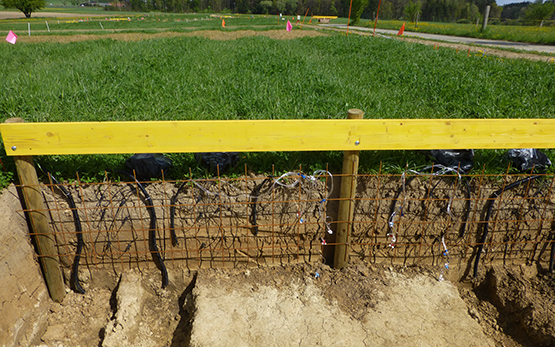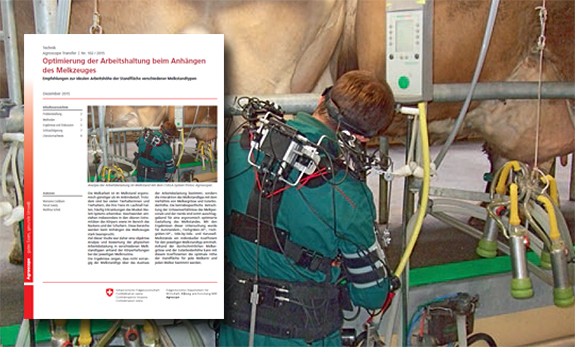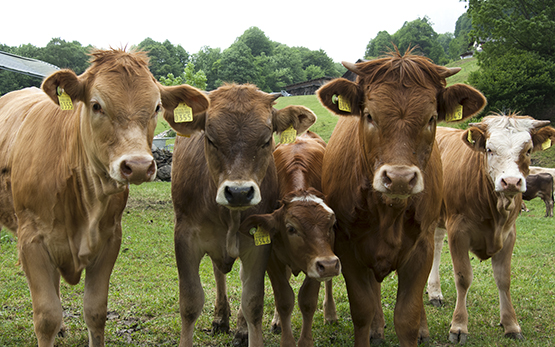Wyss C., Zollinger A., Bachmann I.
Was wir aus dem Lernverhalten der Pferde für Ausbildung und Training lernen können.
Dans: FFP-Jahrestagung 2022 - Ausbildung und Training von Sportpferden. 2. Juli, Ed. Verein Förderung Forschung Pferdesport, Haltern am See. 2022, 1-7.
Gmel A., Zollinger A., Wyss C., Bachmann I., Briefer S.
Social Box: Influence of a new housing system on the social interactions of stallions when driven in pairs.
Animals, 12, (9), 2022, 1-14.
Bachmann I.
Haras national suisse: nouveau repositionnement pour l’avenir.
Bulletin SVPS, (03), 2022, 36-40.
autres langues: allemand
Bachmann I.
Haras national suisse d'Agroscope - Nouveau repositionnement pour l'avenir.
autres langues: allemand
Bachmann I.
Chevaux au pâturage - cadre légal.
Dans: Equiday 2022. 13. & 14. Mai, Ed. Agroscope, Haras national suisse, 2022.
autres langues: allemand
Kienapfel-Henseleit K. I., Piccolo L., Bachmann I.
Head and neck position and behaviour in ridden elite dressage horses in warm-up and test situation.
Dans: 72nd Annual Meeting of the European Federation of Animal Science. 30 August - 3 September, Ed. EAAP scientific committee, Davos. 2021, 553.
Bachmann I.
Pourquoi ne veux-tu pas dormir?
Der Freiberger = Le Franches-Montagnes, 234, 2021, 22-23.
autres langues: allemand
Hiltebrand C. , Buchmann N., Hellweg S., Bachmann I.
Ökobilanzen der häufigsten Einstreumittel für Pferde in der Schweiz – lohnt es sich genau hinzusehen?
Dans: 16e réunion annuelle du Réseau de recherche équine en Suisse. 29 avril, Ed. Agroscope, Haras national suisse, 2021, 16.
Bachmann I.
Forschung am Schweizer Nationalgestüt von Agroscope.
Kavallo, 111, (07), 2021, 36-37.
Ferrer C., Chopin P., Wyss C., Bachmann I., Briefer S.
Utilisation de symboles et communication de préférences.
Dans: Journées sciences et innovations équines. 20-21 mai, Ed. Institut français du cheval et de l’équitation, Le Pin au Haras. 2021, 1-4.
Bachmann I.
Lernformen bei Pferden – wie klug sind sie wirklich?
Kavallo, 5, 2021, 40-43.
Maigrot A.-L., Briefer S., Bachmann I.
Les chevaux utilisent-ils le référencement social?
Dans: Journées sciences et innovations équines. 20-21 mai, Ed. Institut français du cheval et de l’équitation, online. 2021, 1-4.
Briefer S., Maigrot A.-L., Sutter H., Chariatte C., Bachmann I.
Les chevaux et propriétaires ont-ils la même personnalité?
Dans: Journées sciences et innovations équines. 20 -21 mai, Ed. Institut français du cheval et de l’équitation, 2021, 1-4.
Bachmann I.
Sicherheit in Stall, Auslauf und Weide.
Kavallo, 1-2, 2021, 48-50.
Ferrer C., Chopin P., Wyss C., Bachmann I., Briefer S.
Conception et expérimentation d'un dispositif permettant aux chevaux de communiquer leurs préférences à travers l’utilisation de symboles.
Dans: 16ème Réunion annuelle du réseau de recherche équine en Suisse. 29.04., Ed. Agroscope, Avenches. 2021, 1.
Briefer S., Maigrot A.-L., Sutter H., Chariatte C., Bachmann I.
Est-ce que les couples cavaliers-chevaux ont des traits de personnalité similaires?
Dans: 16. Jahrestagung Netzwerk Pferdeforschung Schweiz. 29.4., Ed. Agroscope, Haras national suisse, Avenches. 2021, 14-15.
Briefer S., Maigrot A.-L., Sutter H., Chariatte C., Bachmann I.
Les chevaux et propriétaires ont-ils la même personnalité?
Dans: Journée des sciences et innovations équines. 21.05., Saumur. 2021, 1.
Sutter H., Maigrot A.-L., Bachmann I., Briefer S.
Les chevaux utilisent-ils le référencement avec leur propriétaires?
Dans: Journée des sciences et innovations équines. 21.05., Saumur. 2021.
Piccolo L., Kienapfel-Henseleit K. I., Bachmann I.
Ohrenpositionen und Ohrenbewegungen als ethologische Indikatoren für Stress beim gerittenen Pferd.
Dans: Netzwerktagung. 29.04.2021, Ed. Agroscope, Avenches (Online). 2021, 1.
Briefer S., Maigrot A.-L., Bachmann I.
Zeigen Pferde soziales Referenzieren mit ihren Besitzern?
Dans: Netzwerktagung Pferdeforschung. 29.04., Ed. Agroscope - Schweizer Nationalgestüt, Avenches. 2021, 1.








